Riding the twin horses of economics and military power, China is edging India out of Central Asia
Smruti D
In 1991, when Soviet Union disintegrated, the tremors were felt all around the neighbourhood, including as far as India, which had regarded the USSR as its closest strategic ally and a defence industrial partner. From the debris of the USSR emerged 15 independent countries, including five Central Asian Republics.
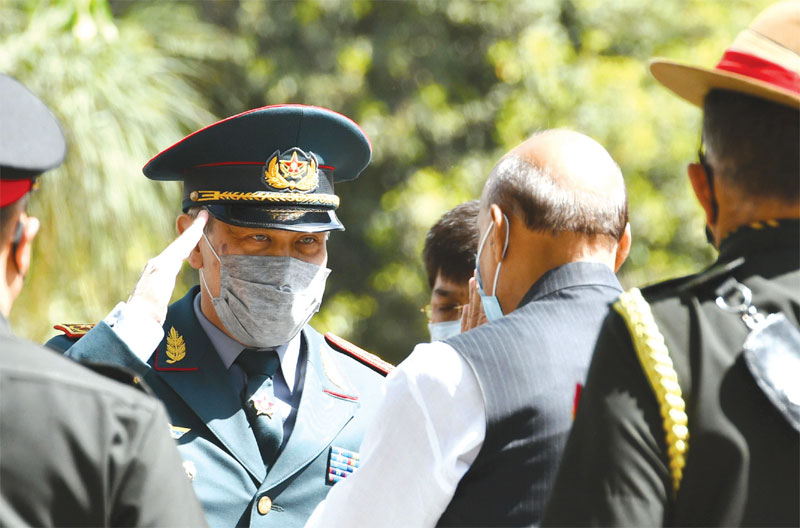
For India, the challenge was establishing diplomatic ties with each of these new countries. This required a delicate balancing act. A few of the newly-formed countries were inimical to Russia, the successor state of USSR. While India inherited its ties with Russia (from the USSR), its military hardware compulsions demanded that India build good relations with them (for instance, Ukraine) independent of Russia.
However, with some countries restoration of ties was dictated by history and strategic imperatives, including gas and mineral resources. The Central Asian Republics (CAR) comprising Kazakhstan, Kyrgyzstan, Tajikistan, Turkmenistan and Uzbekistan, fell in this category. These countries lie at the heart of Eurasia, a region that clubs together influential countries which are rich in terms of natural resources. It is the largest ‘continental’ area which covers 35 per cent of the land surface and is home to nearly 90 countries across two continents—Europe and Asia.
The region hosts the biggest world powers, that are economically, politically and culturally influential. Given the strategic position of CAR–sitting at the crossroads of Asia and Europe—the region is of geostrategic interest to all the major powers. CAR holds the potential for being the transit route that would allow easy flow of energy and goods, as a result of which an increasing number of countries are looking to partner with this region for trade.
Apart from geography, CAR is wealthy in terms of natural energy resources, especially, oil and gas. This attracts regional as well global attention. CAR nestles between such countries as Russia (to its north and west), China (to the east), Iran (southwest) and Afghanistan(south). The region has proximity with South Asia, Southeast Asia, the Middle East and Europe. The five countries that make up CAR thus have bilateral and multilateral partnership opportunities because of their geostrategic location. For instance, Tajikistan is located in close proximity with Pakistan Occupied Kashmir (POK) and is separated only by a narrow strip called the Wakhan Corridor, of about 65km. In some places, it gets as narrow as 15km. This corridor also is the closest land route between northern Afghanistan and China’s Xinjiang or east Turkestan province. The closeness in terms of geography makes the country strategically important for India too. This narrow strip is regarded as a bridge between Southeast Asia and Europe.
Towards its west, CAR has the Caspian Sea which is rich in natural resources. Caspian Sea has an abundance of natural resources. The littorals surrounding the sea are Azerbaijan, Iran, Kazakhstan, Russia and Turkmenistan. Given its geographic position, Kazakhstan has a better standing as compared to the other four countries including Uzbekistan, Kyrgyzstan, Turkmenistan and Tajikistan. Of these, Kyrgyzstan and Tajikistan are the poorest. In terms of area, Kazakhstan occupies the largest area, Turkmenistan comes second while also being the southernmost country, sharing a border with Afghanistan. Despite slow rate of economic growth and political instability (in some parts), the Central Asian region is rich in natural resources and therefore holds a lot of promise.
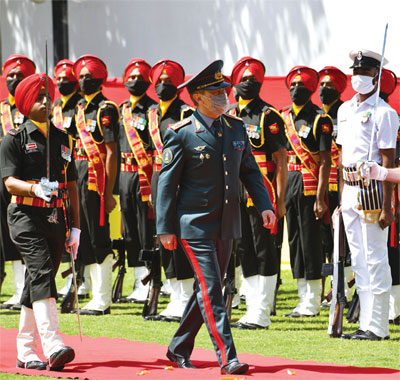
A 2017 report in Diplomat magazine said that the Central Asian states and South Caucasian states are the ‘best (and worst)’ places to invest. This analysis that coincided with 25 years of independence of these nation states said, ‘In 2016, all of the five Central Asian and three South Caucasian countries celebrated the 25th anniversary of their independence. Those two-and-a-half decades provided sufficient time for each state to form a new economic model, identify long-term development goals, and work out interaction patterns for both internal and external investors. Yet it’s a fact that almost all of the countries in these regions have failed to achieve major success in creating competitive, diversified, open economies, with effective protection for both private property and investor rights.’
The article, further stated that none of these states could count on ‘qualitative development, improving their social and economic situations without the help of foreign investments and best practices and technologies’.
After the Cold War ended, there was immense ethnic conflict among the CAR. Even today, the region is fraught with internal disturbances. Some of these countries are the poorest in the world with weak economic and political models. The region faces persisting issues including basic facilities such as energy, trade, transportation and employment, conflicts over borders and water. The countries have poor bilateral relations among themselves, and have a history of lack of cooperation with one another. And to top it all, the region suffers from religious fundamentalism and terrorism.
The India-China Hussle
Historically, the CAR is where the multiple Silk Routes of the ancient world traversed. This historic trade, running through centuries, also created a confluence of culture, cuisine and religion between India, CAR and China. With the Anglo-Russian political and diplomatic confrontation which began in the 19th century and continued well into the 20th century, the relations between India and the Central Asian states deteriorated. After the fall of the Soviet Union, India, however, adopted a renewed approach towards these newly-formed states. India was also one of the first countries to extend diplomatic recognition to CAR.
Over the years, realising the strategic importance of these places, some of the influential countries, including India and China started investing in these countries. Currently, China has been investing hugely in the region under its ambitious Belt and Road Initiative (BRI) and India has taken to investing under its Connect Central Asia policy. However, as is the case in most countries that are signatories to the BRI, China with its economic prowess is much ahead of India.
Apart from China’s growing influence, spearheaded by its economic and military muscle, India’s outreach to CAR has remained slow because of New Delhi’s focus on South and Southeast Asia, despite establishing a ‘Central Asian Consulate’ in Tashkent, the capital of Uzbekistan as early as in 1987. After their independence, however, India did try to actively reach out. Prime Minister P.V. Narasimha Rao visited Uzbekistan and Kazakhstan in 1993 and Turkmenistan and Kyrgyzstan in 1995.
According to an article by Carnegie International, ‘In addition to agreements signed focusing on expanding Indian trade, investments and development assistance to the region, India also emphasised the shared secular values and drew attention to common threats–religious fundamentalism, ethnic chauvinism, terrorism, narcotics-funded violence and crime.’
When Narasimha Rao visited CAR, the region was already undergoing political turmoil. Tajikistan’s civil war between 1992 and 1997, made India insecure about Pakistan making strategic inroads in the region. These fears increased as the Taliban took control of Afghanistan, despite, India continuing its economic and military engagements in the region.
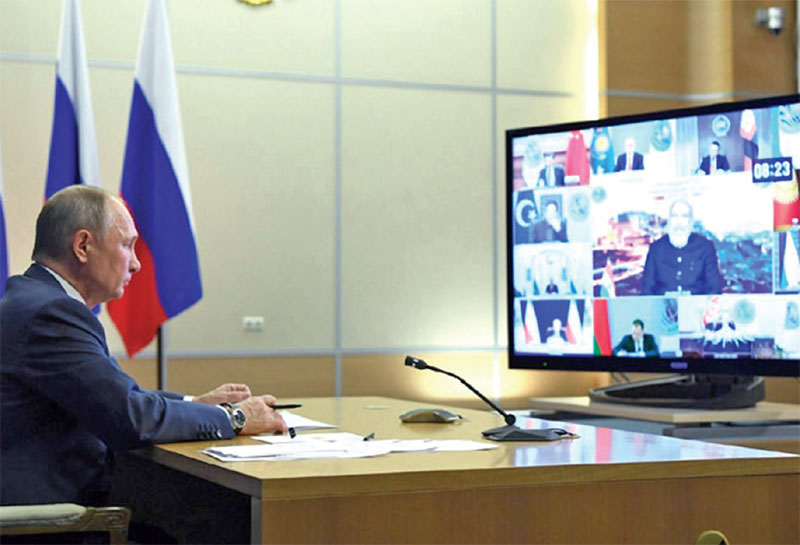
After the India-Pakistan Kargil war of 1999, India expressed an interest in acquiring the Ayni airbase in Tajikistan. Given the proximity of the area to Pakistan, Afghanistan and China, the Indian thinking was that through Ayni, Indian Air Force would be able to carry out aerial surveillance of northern Afghanistan, Pakistan and China. In 2002, it got some rights to place Indian Air Force personnel at the base. For almost two decades now, India has been persistent about its commitment in developing and sustaining the airbase. Indian authorities, on their visit to Tajikistan have always visited the base. For instance, Prime Minister Modi and President Kovind made a stopover at the airbase during their visits to Tajikistan in 2015 and 2018 respectively. So far India has also spent USD 70 million in refurbishing the base and has maintained a 150-personnel strong contingent of the IAF and Border Road Organisation in Ayni since 2005.
However, despite the investment and presence of its personnel, Tajikistan has repeatedly refused India to operate from the base, primarily out of Russian pressure. Russian government has been stone-walling any foreign military presence in the area of its interest and influence. Now with China’s Belt and Road Initiative, in which Russia is its close partner and CAR the linchpin of the north-south corridor, it is even more unlikely that India would get any military rights at Ayni. Meanwhile, China has operationalised five railways and six international automobile routes through CAR that seamlessly connect Europe to the West and Southeast Asia.
To enhance bilateral cooperation between India and Central Asia, India signed the International North-South Transport Corridor (INSTC) in 2002. The INSTC envisages to be a 7,200km long multi-modal network of ship, rail and route for moving freight between India, Iran, Afghanistan, Azerbaijan, Russia, Central Asia and Europe. The project seeks to reduce costs and time over the traditional route. Kazakhstan and Turkmenistan are other routes under consideration in this project. This project is in congruence with Ashgabat agreement, which is another multimodal transport agreement signed by India, Oman, Turkmenistan, Uzbekistan and Kazakhstan which will facilitate a transit corridor between Central Asia and the Persian Gulf. The dry runs for two routes under the project were conducted in 2014. On Indian Prime Minister Modi’s visit to Central Asia in 2015, he proposed that Turkmenistan become a member state in this project.
Assistant Professor, Centre for Russian and Central Asian Studies, Dr Rashmini Koparkar says, “The main difference between the INSTC and BRI is that unlike BRI, INSTC is a multilateral project, initiated by India, Iran and Russia in 2000, which was later joined by several other countries of the region. The two initiatives are completely different in objective, scale, size and financial resources. There is a basic geographical difference as well. While the INSTC envisions north-south connectivity, the BRI is mainly about east-west connectivity. Nevertheless, the two overlap/ crisscross at several points.”
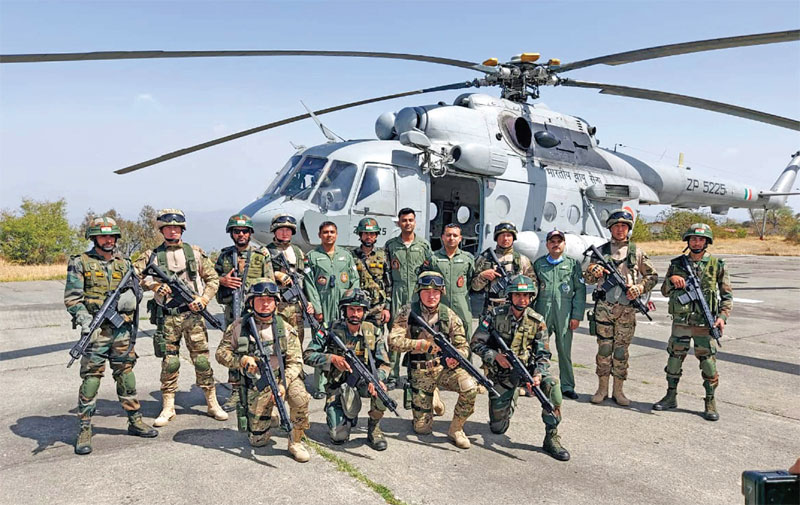
She adds, “INSTC faces infrastructural, procedural and logistical challenges, which have led to its slow development. China’s BRI push and its increasing closeness with the partner countries in the region might have further hampered the process. However, there is no reason to look at the INSTC as a challenge to BRI or the vice versa. In fact, the two can potentially be complementary to each other.”
India undertakes several military exercises with Central Asian countries. The most recent one took place in April this year, where Special Forces from India and Kyrgyzstan participated in the eighth edition of Khanjar exercise in Bishkek. The first edition took place in 2011. The focus of this exercise was high-altitude and mountain operation in the context of counterterrorism.
The same month, India also hosted the defence minister of Kazakhstan Lt Gen. Nurlan Yermekbayev. The discussion centred around strengthening of defence cooperation, capacity building, training and military exercises between the two countries. Kazakhstan is India’s largest trade and investment partner. The total bilateral trade between the two countries amount to USD 1.2 billion. Indian and Kazakh forces also participated in a joint military exercise for counterinsurgency and counterterrorism called Ex KAZ-IND. Kazakh troops are deployed along with the Indian battalion in the United Nations Interim Force in Lebanon (UNIFIL). The two nations have also been cooperating in the field of space communication system satellite, KazSat-2R.
Just a month before these two events, India hosted troops from Uzbekistan for the second edition of India-Uzbek joint military exercise, Dustlik-II, that were performed in Uttarakhand. The first edition of these took place in 2019. The focus here too was on counterterrorism.
As of 2021, India’s total trade with CAR amounted to USD 2 billion. Chinese trade turnover with CAR, on the other hand, according to the 2018 data by China’s customs service, was USD 41.7 billion.
Koparkar says, “China’s rise has become a matter of concern for the whole world. In the post-COVID world, this concern has become more relevant. Chinese activities in its neighbourhood put a question mark on its intentions and geopolitical ambitions. As BRI affects all countries in India’s vicinity, it is important to keep a close tab on its development. However, as far as Central Asian region is concerned, there is no reason for India to be threatened by the Chinese presence. The best strategy for India is, and should be, to gradually expand its own footprint, and increase its engagements in the region, qualitatively and quantitatively.” She adds, “Central Asian countries being economically less developed, provide China with a lucrative market. They export raw material and energy resources to China, and buy manufactured goods from it later. China has recently emerged as the largest trade partner as well as largest source of foreign investments in the region. It has an overwhelming presence in infrastructure projects in the region.”
The western province of China, known as ‘Xinjiang Uyghur Autonomous Region’, is comparatively less developed and unstable. It has ethno-cultural links with Central Asia. Connectivity and trade with the Central Asian countries is considered necessary for the development and stability of Xinjiang. Political and cultural closeness with Central Asian countries is looked upon by China as a catalyst in tackling challenges like terrorism, extremism and separatism. This was one of the reasons behind formation of the Shanghai Cooperation Organization (SCO).
China has carved deep inroads in CAR. It engages in trade, energy deals and military agreements on a large-scale. It is now, in fact, the most influential country in the region. While all the five economies have benefited because of China, three of these five countries, namely, Uzbekistan, Turkmenistan and Kyrgyzstan have China as their largest trading partner. It is the ‘biggest investor’ in Tajikistan and Kyrgyzstan. According to a report published by United News of India (UNI), in December 2020, natural gas supplies to China have helped drive CAR’s economic growth for the last decade. Over 90 per cent of Turkmenistan’s total exports comprises natural gas supply to China. This is the consequence of the 3,666km long China-Central Asia natural-gas pipeline that begins from Gedaim on Turkmenistan-Uzbekistan border and stretches all the way to Horgos in Xinjiang in China. It comprises four lines, A, B, C and D.
In terms of investments, Kazakhstan currently looks at about 55 projects that have Chinese investments. As per a report by Indian news agency UNI, about USD 27.6 billion are being invested in oil and gas projects and almost USD 6 billion are being invested in mining and metallurgy. Thanks to the BRI, the trade between these two countries has reached over USD 20 billion, making Kazakhstan China’s ‘major strategic partner’. Total Chinese investments amount to USD 30 billion in Kazakhstan alone. The latter is also constructing special economic zones (SEZ) on the Kazakh-China border.
China is involved in three rail infrastructure projects in Central Asia. During President Xi Jinping’s Uzbek visit in 2016, he and his Uzbek counterpart inaugurated the Angren-Pap electrified railway line. The contract to construct the railway line was bagged by a Chinese company. Tajikistan’s Vadhat-Dangara line and the Khorgos Gateway dry port are also partly funding by Chinese companies.
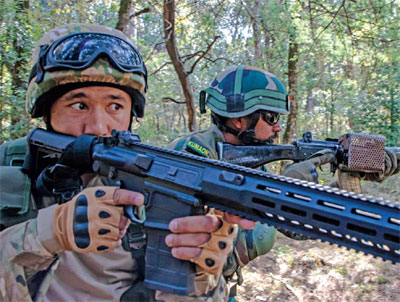
China is also looking to connect itself to Uzbekistan via Kyrgyzstan. The project, famously known as the China-Kyrgyzstan-Uzbekistan railway project has been on the cards since the time Central Asian countries gained independence. However, it hasn’t fully taken off. In June last year, the transportation corridor was extended well inside China and was announced that the first freight trains had left the Chinese city of Lanzhou bound for Tashkent. The Kyrgyzstan link, however, has not taken off as yet. Some analysts believe that the project will remain half-baked because of topographical complexities pertaining to construction in Kyrgyzstan.
China’s ambitious China-Central Asia-West Asia Economic Corridor (CCAWEC) is one of the six land corridors that China is building under the BRI. Koparkar says, “The China-Central Asia-West Asia Economic Corridor basically connects western cities of China with countries of West Asia via Central Asia. There are several projects/ initiatives under this corridor. This corridor underlines the transit role of the Central Asian countries.”
She adds, “The China-Central Asia-West Asia Corridor runs from Urumqi in China’s Xinjiang to Central Asian capitals of Almaty, Bishkek, and Tashkent. The corridor splits in Uzbekistan. While one part heads to the Caspian Sea and South Caucasus, and the other goes to Iran, Turkey and West Asia. Turkey is the key country in this corridor, both from energy as well as transit point of view. The China-Central Asia-West Asia Corridor has no direct implication for India. However, at several places it criss-crosses India’s own connectivity initiatives in the region, including INSTC, Chabahar Port and the Ashgabat Agreement. Iran is a significant country in India’s connectivity projects in the region, and China’s growing closeness with Iran can be a matter of concern for India.” After the recent incident of the Suez Canal getting blocked by a Japanese container ship Evergiven, the spotlight has been on the land corridors that the BRI is constructing and how they could be the alternative.
In addition to infrastructural projects, China also apparently has a ‘secret’ military base in Tajikistan. This base is just 12km from the Wakhan Corridor which is located to the north of Pakistan and Pakistan-occupied Kashmir. The base is located at Kyrzylrabot in Tajikistan. For China, the Wakhan Corridor is important because it provides a passage to Afghanistan and Pakistan’s Khyber-Pakhtunkhwa province, through the Borghil pass. Satellites images have shown the presence of military helicopters at the base. Reports say that the base may have been opened in 2016-2017. The base also intends to ‘forestall the prospect of the ethnic Uyghur militants trickling across from Afghanistan into China’.
According to a report by ORF, China has been swiftly increasing its presence in Central Asia’s security sector. The report stated, ‘China today accounts for about 18 per cent of the total military purchases by Central Asia as compared to about 1 per cent at the beginning of the last decade.’
China also undertakes several bilateral military exercises with the CAR countries. In 2019, China undertook several joint military exercises with Tajik, Kyrgyz and Uzbek forces. Yet, despite having emerged as a formidable economic power in Central Asia, China faces protests from several countries in CAR, with public opinion in Kazakhstan being the most opposed to China. In March this year, anti-China protests took place in several towns in the country and Kazakh authorities had to detain several people. The protestors rallied against China’s growing influence in the country. As is the case with all BRI signatories, people in CAR countries too are opposed to China’s growing economic and military presence. Almost all the five countries owe huge debts to China.
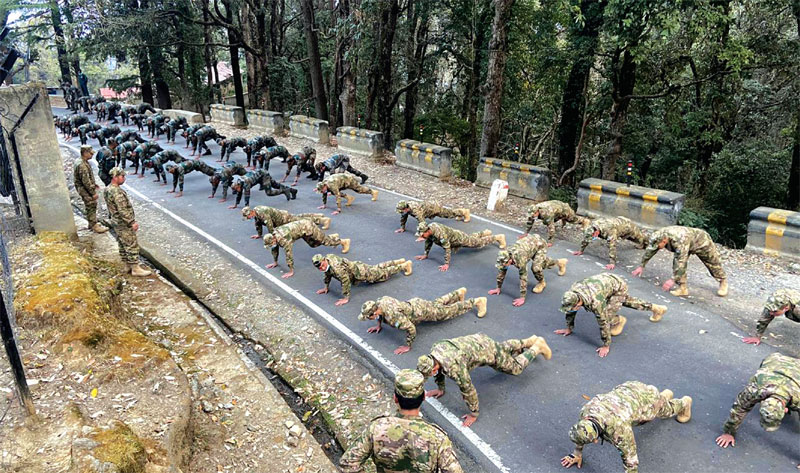
In the race to influence Central Asia, China is clearly ahead. Thanks to its military and economic planning, the country operates in a way that serves the purpose for poor countries while fulfilling its own strategic motives. Koparkar speaks about the difference in approach of India and China. She says, “Both India and China are important regional players and have considerable influence in the Central Asian countries. However, there is no visible competition in the role of the two. While China is significantly present in connectivity, infrastructure and trade projects, India also has its strong areas in the region.”
She adds that India’s trade with these countries is much below potential mainly because of lack of direct land connectivity. However, in sectors like pharmaceuticals, telemedicine, information technology, skill development and education, India is the key player. Moreover, India’s cultural influence on these nations, and the overwhelming popularity of Indian movies, television, Yoga, Ayurveda, music, dance, cuisine is simply unparalleled.
The Central Asian countries have tremendous respect and goodwill towards India, and display welcoming attitudes towards Indians. In fact, they look at India as an important player in order to diversify their relations, and diminish the influence of major powers like China and Russia. She adds, “It is one of our priorities to assist these smaller countries in our ‘extended neighbourhood’ in their developmental quest. India has taken various steps in that regard, including the recent announcement of USD 1 billion line of credit for infrastructure and connectivity projects.”
The important thing here is sustaining power. If India can hold its ground, it can build on it historic goodwill to create a cooperative niche for itself in the region, especially through the SCO.

